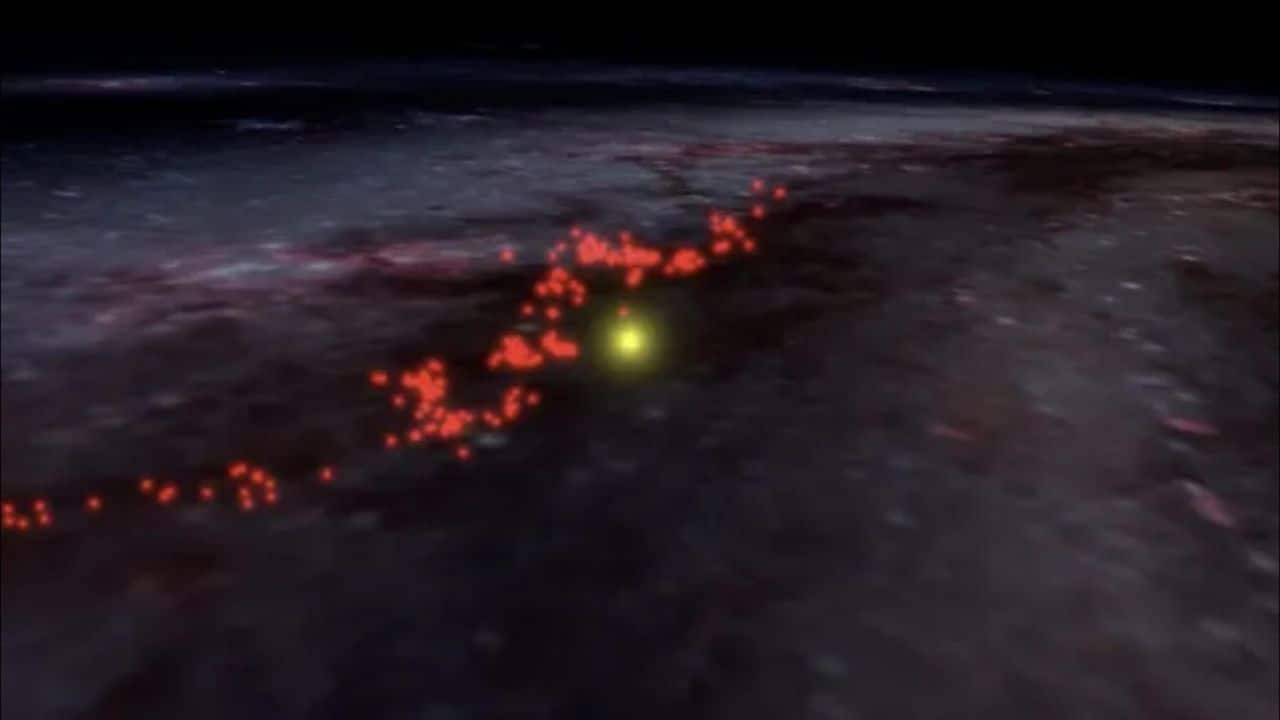



Like a ship navigating shifting tides, our solar system moves through different galactic regions. A new study suggests this cosmic journey may have influenced Earth's climate millions of years ago.
Researchers from the University of Vienna, using data from the European Space Agency’s Gaia mission, found that around 14 million years ago, the solar system passed through a dense, star-forming region near Orion. This area is part of a massive structure known as the Radcliffe Wave, a 9,000-light-year-long chain of star clusters.
As the solar system moved through this dust-rich region, Earth may have received an increased influx of interstellar particles. The timing of this event coincides with Earth’s shift from a warmer climate to a cooler one, marked by the expansion of the Antarctic Ice Sheet. The study, published in Astronomy & Astrophysics, suggests that this encounter could have played a role in the climatic change.
 (Image: Alyssa A. Goodman/Harvard University)
(Image: Alyssa A. Goodman/Harvard University)"If we find a spike in certain radioactive elements, it would support our theory," said Efrem Maconi, the study’s lead author and a doctoral student in astrophysics at the University of Vienna.
Searching for Evidence in Earth’s PastIdentifying this event in Earth's geological record is challenging. Scientists would need to find a 14-million-year-old increase in iron-60, a rare isotope linked to supernovas but scarce on Earth. However, iron-60 has a half-life of just 2.6 million years, making its detection difficult.
Astronomers first identified the Radcliffe Wave in 2020, thanks to Gaia’s ability to map star-forming clouds in 3D. Maconi’s team traced the past movements of 56 star clusters in the structure and found that our solar system was closest to Orion around 14 million years ago. It passed within 65 light-years of two dense star clusters, NGC 1980 and NGC 1981, staying in the region for about a million years.
"Looking back in time is hard, whether in space or Antarctica," said Teddy Kareta, an astronomer at Lowell Observatory in Arizona who was not involved in the study. He added that further research is needed to confirm the theory.
Future Prospects for ProofChris Kirkland, a geologist at Curtin University in Australia, noted that Earth's journey through the galaxy has likely influenced its geology. Previous research has shown that meteorite impacts played a role in forming Earth's continental crust. However, he remained cautious about linking interstellar dust to climate change.
Maconi’s team estimates that the dust influx would need to be at least a million times higher than today’s levels to significantly impact the climate. More likely, the effects were subtle and occurred over hundreds of thousands of years. This would differentiate them from current, human-driven climate change.
Kareta suggested that other places in the solar system might hold clues. The Moon’s deep craters, which remain untouched by geological activity, could preserve evidence of extraterrestrial dust or radioactive elements.
"Solar system-wide events should leave solar system-wide evidence," Kareta told to Livescience.com.
Discover the latest Business News, Sensex, and Nifty updates. Obtain Personal Finance insights, tax queries, and expert opinions on Moneycontrol or download the Moneycontrol App to stay updated!
Find the best of Al News in one place, specially curated for you every weekend.
Stay on top of the latest tech trends and biggest startup news.